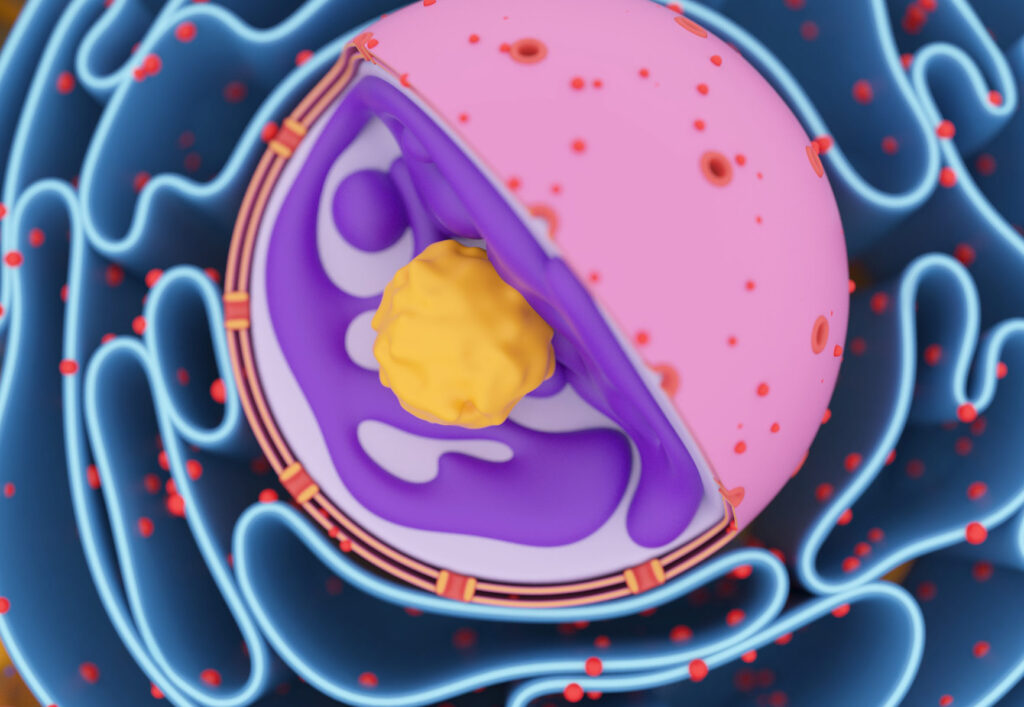Germ cells pass DNA to the next generation and undergo massive reorganization of their DNA packaging to generate totipotency, or the ability to differentiate into any cell type. Understanding the mechanism of germ cell nucleome formation can offer valuable applications for addressing infertility.
In a new study published in Nature Structural & Molecular Biology titled, “The mitotic STAG3-cohesin complex shapes male germline nucleome,” researchers from Kyoto University have discovered STAG3-cohesin, a new mitotic cohesin complex that helps establish the unique DNA architecture of spermatogonial stem cells, which give rise to sperm. This discovery offers new strategies for treating infertility and certain cancers.
The study was led by Mitinori Saitou, PhD, director and principal investigator at the Institute for the Advanced Study of Human Biology (WPI-ASHBi) at Kyoto and co-corresponding author, Masahiro Nagano, PhD, Research Fellow at ASHBi, postdoctoral researcher at the Massachusetts Institute of Technology (MIT), and co-corresponding author, and Bo Hu, Research Fellow at ASHBi.
DNA folding is highly organized with insulation, or regulatory DNA sequences that create boundaries within a eukaryotic genome to prevent neighboring genes from being affected by the regulatory signals, such as enhancers or silencers, of other genes. Ring-shaped protein complexes called cohesins serve as the key players that create this insulin. Cohesin complexes were previously thought to exist in two main forms: 1) mitotic cohesins, containing STAG1 or STAG2 together with RAD21, a gene that provides instructions for translating a subunit of the cohesin complex, and 2) meiotic cohesins, containing STAG3 together with REC8 or RAD21L. SCCs acquire distinctive chromatin organization with weak insulators, but the underlying mechanism remains unknown.
The authors showed that STAG3, so far known to exclusively form meitotic cohesins, generates a mitotic cohesin for male germline nucleome programming in mice. The researchers mapped the location of different cohesin proteins in SSCs cultured in vitro. Results showed that that RAD21 partnered with STAG3, a component of a cohesin complex that regulates the separation of sister chromatids specifically during meiosis. The RAD21-STAG3 complex was confirmed using immunoprecipitation-mass spectrometry to confirm the new type of cohesin, known as the STAG3-cohesin.
To investigate function, the researchers generated two types of genetically modified SSCs in vitro: one set was a STAG3 knockout, while the other contained only STAG3 (without STAG1 or STAG2). Results showed that that STAG3-cohesin is responsible for the unusually weak DNA boundaries in SSCs. Notably, in mice missing STAG3, SSCs were hindered from progressing from their stem-cell state to the next stage of sperm development. This fertility challenge indicates that STAG3-cohesin is critical for proper germ cell development.
As STAG3 functions in mitotically dividing cells, the team then investigated whether it functions in other human cell types. By analyzing large datasets of all human cell types, the researchers found that STAG3 is highly expressed in immune B-cells and in B-cell lymphomas. Interestingly, blocking STAG3 caused slowed lymphoma cell growth, suggesting that STAG3 could be explored as a possible target for future cancer research.


